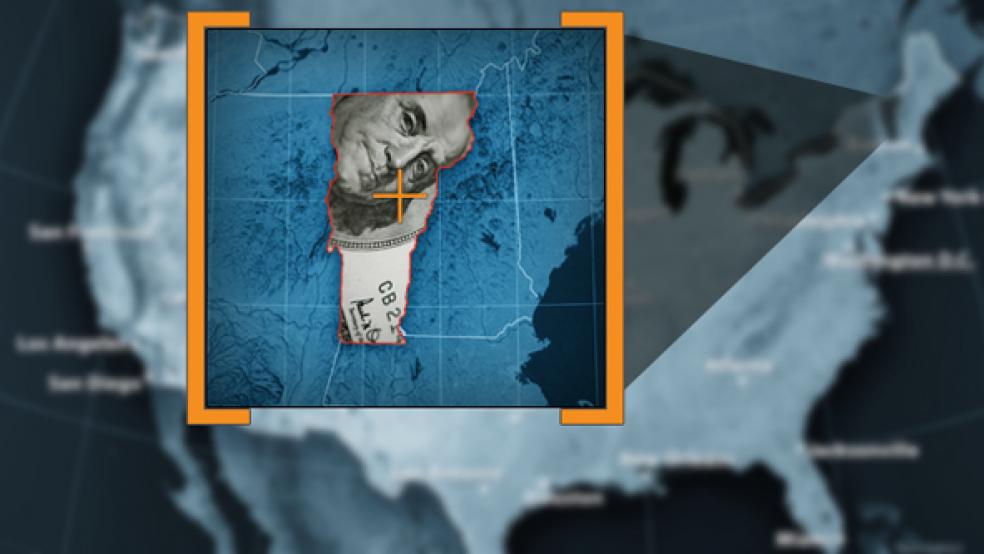It’s hard to imagine a silver lining to a natural disaster. Last month, for example, Tropical Storm Irene swept through Vermont, leaving in its wake 3 dead, 800 homes destroyed, and nearly 200 major roads and historic covered bridges washed away. As residents gradually emerge from the mud and debris, the state has incurred public and private costs that will top $1 billion.
But if there is any upside, it’s that the worst flooding there in 83 years is triggering massive reconstruction that will provide a significant bump for the state’s economy and construction industry. Moreover, many of the destroyed properties are being replaced with more energy-efficient and safer structures, according to experts.
Marshall Leonard, general manager of G.W. Tatro Construction in Jeffersonville, Vermont, says his 50-person company, which specializes in highway, street, and infrastructure construction, has already completed repairs on approximately 12 major roads under contracts worth as much as $500,000. And Tatro continues to see three to four new bid requests each week.
“We are swamped and can’t address all of the bids,” Leonard said. “Unfortunately in our situation we are so busy that we’re not able to staff each project as efficiently as normal.”
Similar stories can be heard throughout the Eastern Seaboard and in the Midwest, which have been clobbered by vicious storms and flooding throughout the summer. While the true costs of Irene is still unclear, industry estimates say it could reach more than $12 billion and will likely prove to be one of the 10 costliest catastrophes in the nation’s history largely because the swath of destruction on the East Coast was so wide. For general contractors, craftsmen, and construction workers who have struggled to stay afloat in one of the hardest-hit industries in the Great Recession, devastation can put bread on the table. Since 2006, the construction industry has lost more than 1.45 million jobs and continues to suffer as it seeks to find solid footing.
Industry experts emphasize that no one is suggesting disasters are welcome or a good way to boost an economy. And long term, there can be a negative impact. “The renovation is great for contractors who haven’t had the work,” says Stephen Melman, director of economic services at the National Association of Home Builders. “But there are probably going to be some people who move out, and that will hurt those communities.”
With winter just around the corner in Vermont — when construction activity essentially stops — there is a big push to rebuild roads, bridges, and homes as quickly as possible. After the second week in November, when the freeze starts to set in, crews probably won’t be able to spread pavement. And the leaf-viewing season, which generates a substantial share of tourism revenue for many New England states, is also driving the rush to rebuild.
Some smaller contractors aren’t seeing new jobs just yet but expect an increase in the coming months as insurance claims are completed and Federal Emergency Management Agency assistance is granted. . So far FEMA has approved more than $15 million in financial assistance for individual and household programs in Vermont.
Ward Smyth, president of Turtle Creek Builders in Waitsfield, Vermont, has been awarded two jobs as a result of the flooding. Smyth, who cut the workforce of his home remodeling business in half since the start of the recession, expects enough work in the coming months to hire back a worker. “We were slow enough to jump right in with remodeling a home,” he said. “So that has put us to work.”
Still, even with the new business coming his way, Smyth is concerned that if homeowners don’t receive federal assistance, many may not bother fixing their houses, especially those without flood insurance. Only 17 percent of homeowners in high-risk flood zones own flood insurance in Vermont. “I’m worried that a lot of people who can’t afford to fix will wander off into the setting sun and lick their wounds and start over,” he says.
Industry researchers have found that an increase in economic activity following disasters isn’t limited to construction jobs. Jamie Kruse, director at the Center for Natural Hazards Research at East Carolina University, studied the economic impact of the deadly tornado that hit Oklahoma City in 1999 and found the labor market improved across almost all business sectors.
Amanda Ibey, spokesperson for the Vermont Home Builders Association, notes that while the circumstances aren’t desirable, the aftermath of Irene is an opportunity to improve many homes that aren't energy inefficient. Vermont’s housing stock is among the oldest in the nation. Sixty-three percent of homes and 74 percent of rental units in Vermont date to 1979 or earlier, before advanced energy efficiency technology was available. And many of those properties were built under more lax housing codes were more lax and when the use of lead-based paint was prevalent, according to the Vermont Housing Finance Agency.
“There is the potential that when something like this happens, it wipes out the old infrastructure and hopefully we don’t just replace it, we build it better,” Kruse said. “That has a positive effect on the productivity of the region.”



